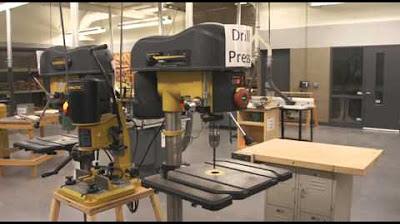Pop Physics: The Ruler Experiment
Summary
TLDRIn this video, we explore the surprising science behind using a piece of paper to stop a ruler from flying off a table. By demonstrating the effects of atmospheric pressure, we show how the air around us exerts force on objects. When the ruler is struck, the paper remains in place because the atmospheric pressure on top of it is stronger than the pressure underneath, preventing it from falling. This trick works best when the movement is fast enough to allow the air pressure to act, revealing the fascinating role of air pressure in everyday objects.
Takeaways
- 😀 Hitting a ruler sitting on the edge of a table causes it to fly off.
- 😀 A simple piece of paper can stop the ruler from moving when placed underneath.
- 😀 A larger piece of paper may be necessary to stop the ruler completely.
- 😀 The ruler's movement is slowed due to the atmospheric pressure around the paper.
- 😀 Air pressure applies equal force on all sides of an object.
- 😀 When the ruler tries to move, it has to overcome the atmospheric pressure on top of the paper.
- 😀 The lower pressure under the paper helps prevent it from falling.
- 😀 The demonstration of the paper trick shows that pressure differences are key to stopping the ruler.
- 😀 The air above the paper exerts more pressure than the air underneath it, creating a balancing effect.
- 😀 The trick doesn't work if the action is performed too slowly.
Q & A
What happens when you hit a ruler sitting on the edge of a table?
-The ruler goes flying off the edge of the table due to the force applied when hit.
What is the proposed solution to stop the ruler from flying off?
-The solution is to use a piece of paper to stop the ruler from moving.
Why is a bigger piece of paper required for the trick to work?
-A bigger piece of paper is needed because it provides a larger surface area to counteract the atmospheric pressure and stop the ruler from moving.
What happens when the ruler is placed on the paper and a force is applied?
-The ruler barely moves because the atmospheric pressure around the paper creates an opposing force, preventing the ruler from flying off the table.
How does atmospheric pressure affect the movement of the ruler?
-Atmospheric pressure pushes equally from all sides, and when the ruler tries to move the paper quickly, the paper fights against this pressure, while the air beneath the paper experiences lower pressure.
What prevents the paper from falling when the ruler is placed on it?
-The difference in air pressure: the atmospheric pressure is higher on top of the paper and lower beneath it, which prevents the paper from falling.
Why doesn't the trick work if it's done too slowly?
-If the movement is too slow, the difference in pressure between the top and bottom of the paper isn't significant enough to counteract the force and prevent the ruler from moving.
What is the role of atmospheric pressure in this trick?
-Atmospheric pressure plays a crucial role by creating a pressure differential: higher pressure above the paper and lower pressure below, which keeps the paper in place and prevents the ruler from moving.
What would happen if the paper was too small?
-If the paper were too small, it wouldn't cover enough surface area to effectively create the necessary pressure differential, and the ruler would not be stopped.
Is the trick applicable under normal conditions or does it require specific circumstances?
-The trick works under normal atmospheric conditions but requires quick movement to create the pressure difference needed to keep the paper in place and stop the ruler.
Outlines

This section is available to paid users only. Please upgrade to access this part.
Upgrade NowMindmap

This section is available to paid users only. Please upgrade to access this part.
Upgrade NowKeywords

This section is available to paid users only. Please upgrade to access this part.
Upgrade NowHighlights

This section is available to paid users only. Please upgrade to access this part.
Upgrade NowTranscripts

This section is available to paid users only. Please upgrade to access this part.
Upgrade Now5.0 / 5 (0 votes)





